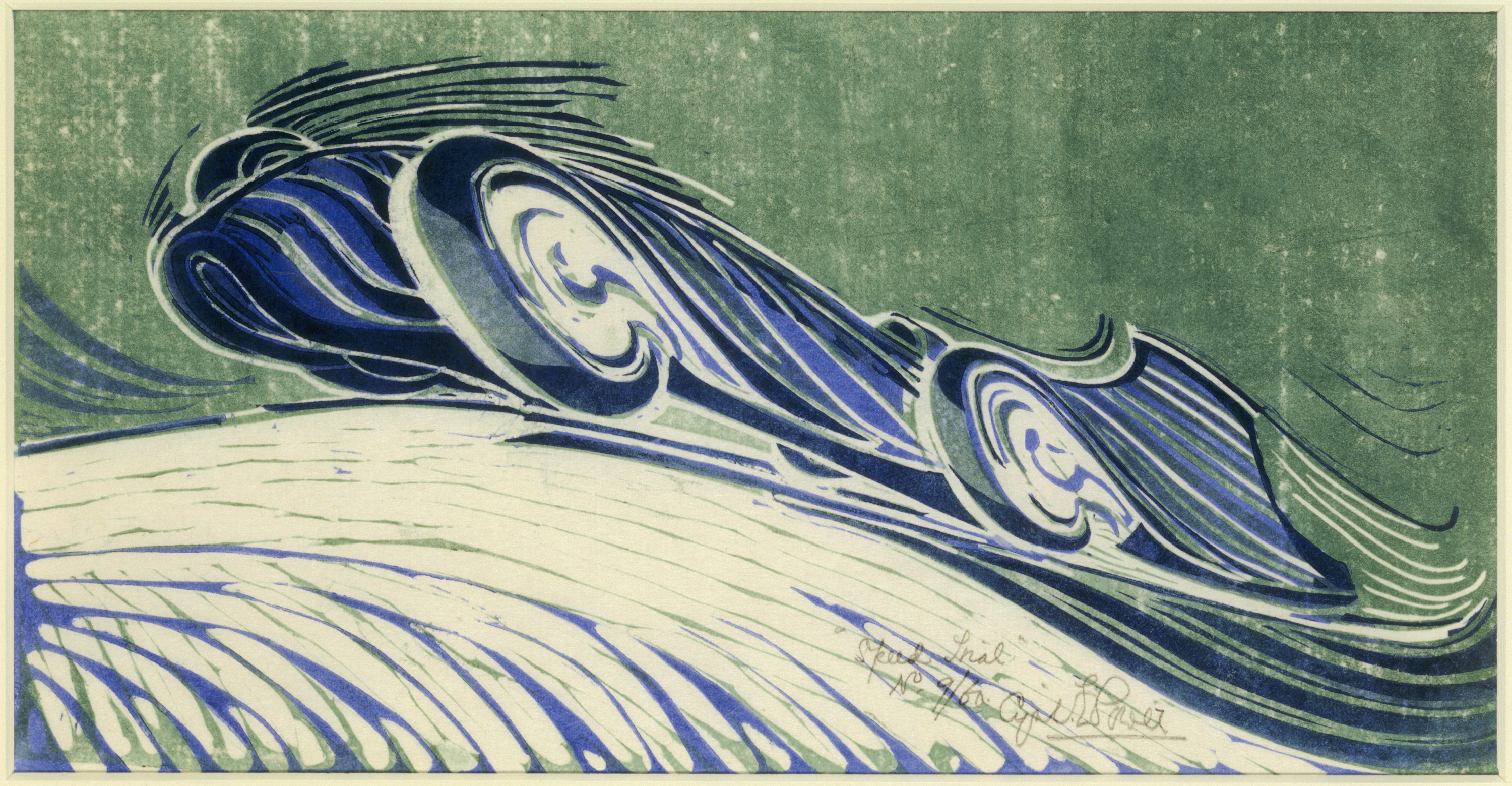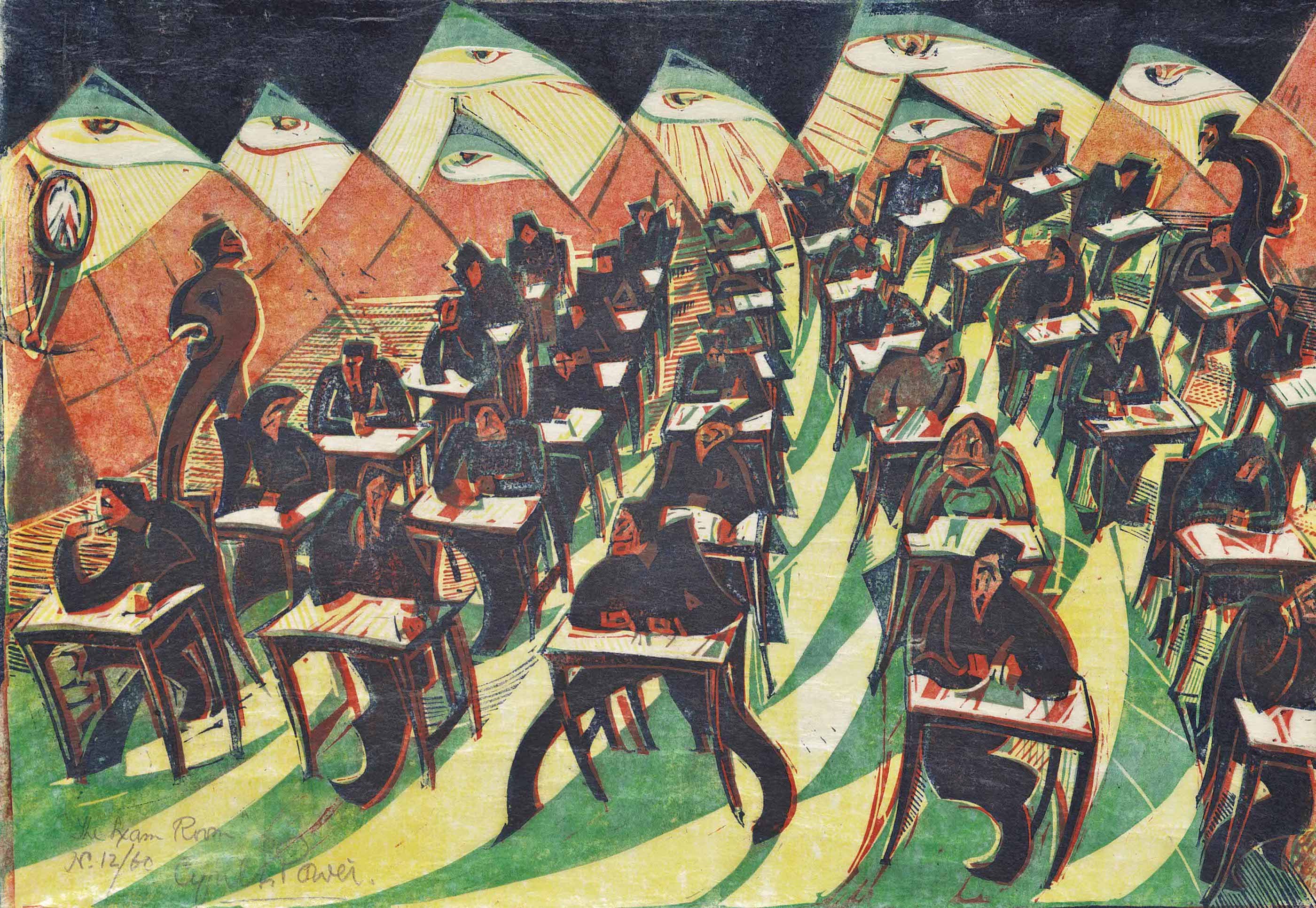This captivating print is the work of Cyril Power (1872–1951), a cofounder of the Grosvenor School of Modern Art. Power was a practicing architect before he was called up to commission with the Royal Flying Corps in 1916, eventually embarking on a career as an avant-garde printmaker.
A disparate band of artists, the Grosvenor School was united by a commitment to working in the new medium of color linocut printmaking, bringing a diverse set of early 20th century influences to bear on their vision of interwar modernity—including the Futurists' total embrace of the beauty of speed.
Like many of his contemporaries, Power was fascinated by the machine age in which he lived, in an era when new technology was rapidly expanding the realm of what was thought possible. By this point, Einstein’s Theory of Special Relativity had also filtered into the popular imagination, throwing out commonplace assumptions about the fixed nature of time and space. Speed Trial was inspired by Malcolm Campbell’s 1931 land-speed record on Daytona Beach in Florida. Hurtling along at 246 mph, Campbell’s Bluebird car is evoked by Power through fluid abstract curves and what he called "rhythms of color and light." Notice the faint gradation of the dark blue, which was printed more heavily on the hood, giving subtle emphasis to the machine’s engine as the source of power.
You can see it on display at the Dulwich Picture Gallery in London until 8 September 2019, as part of Cutting Edge: Modernist British Printmaking, the first major exhibition of The Grosvenor School.
P.S. Cars and speed fascinated artists and were popular subjects to paint in the early 20th century. See the best depictions of automobiles here!


 Cyril Power
Cyril Power